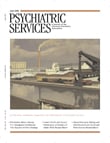Just as a bias exists to publish positive—and not negative—results from clinical trials, our field favors reports demonstrating that an illness is more prevalent or has greater impact than previously documented. Take Alzheimer's disease. A few decades ago this was a rare presenile dementia. But because similar pathology was found in later-onset dementias, the diagnosis was extended to include these cases. This step made a very rare disease quite common, and it has culminated in studies showing that Alzheimer's disease affects half of all persons over 85. However, the neuropathological changes that are the sine qua non of Alzheimer's disease are found among very old persons without dementia. The gold standard for diagnosis is not a gold standard. Yet these high prevalence rates are cited when our field requests more funding for training, clinical care, or research.
There is a similar bias when it comes to measuring the "cost" of Alzheimer's disease. When a wife spends time caring for her demented spouse, the cost of this effort is computed at the market price for such services. Although giving monetary value to these activities highlights their significance, it also distorts their economic importance. The sum of such "costs" for all diseases may well be greater than the GDP. However, with other advocacy groups presenting ever more impressive cost estimates for their disorders, such methodological niceties are ignored.
When it comes to diagnosis we are no more parsimonious. Ostensibly in order to rule out reversible causes of dementia, a costly CT scan or MRI is considered de rigueur. Yet truly reversible dementias are rare, and those detectable by brain imaging are as rare as hen's teeth.
Numerous potential breakthroughs in the treatment of Alzheimer's have been reported in journals and picked up by the lay press. Although some progress has been made, any neutral observer would agree that the number of breakthroughs is far less than the number of announcements. Something similar occurs when economics experts overexuberantly predict recessions.
We see little written about breakthroughs that don't pan out. Some are found to be mistaken. But most just slip into oblivion—not tested, but abandoned like last year's styles. This might occur less frequently if journals routinely listed the titles of such articles in an "obituary" section and required authors to disclose which of their previous "discoveries" had not been replicated. Such a policy might help to make us less self-congratulatory.

